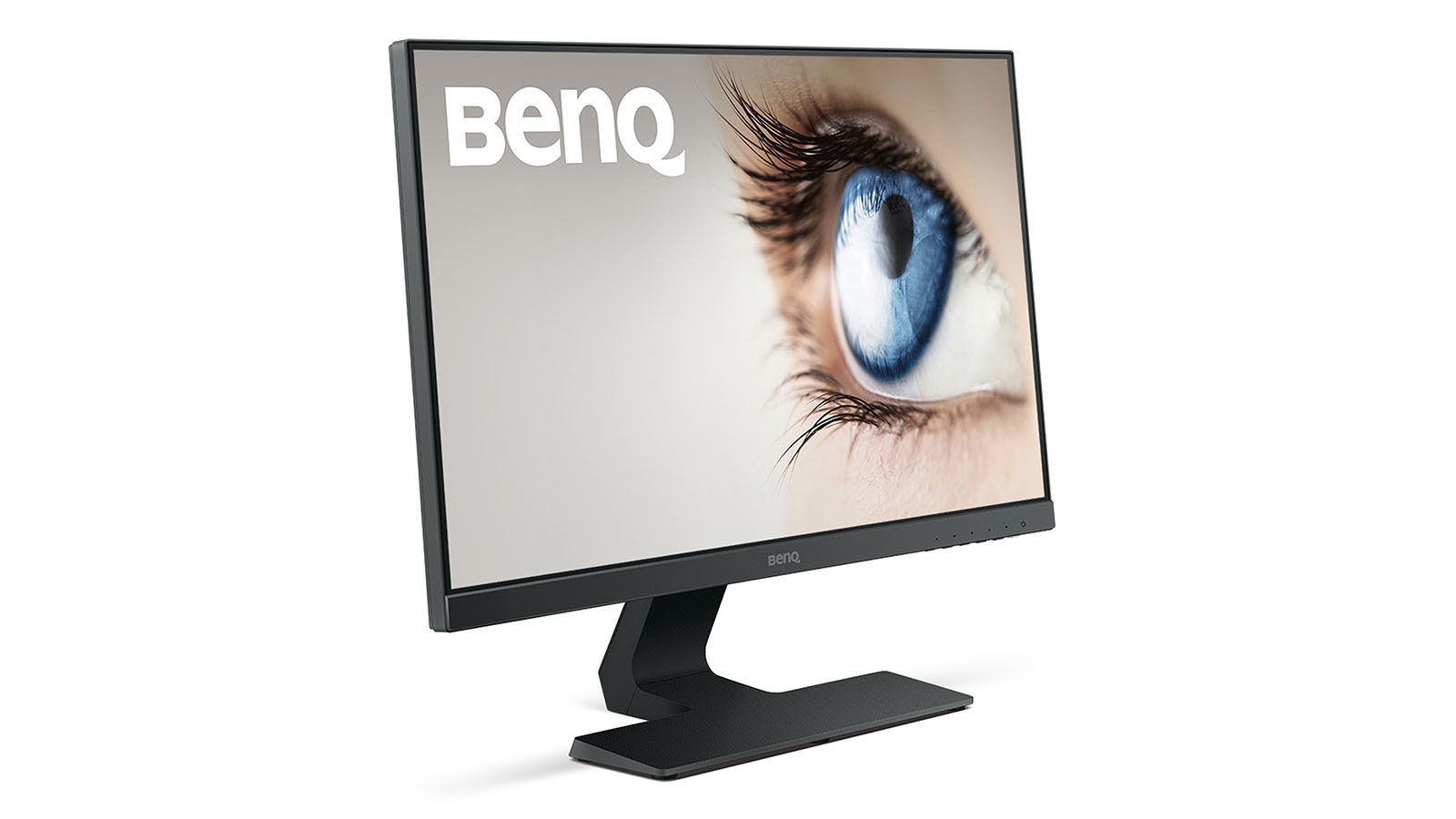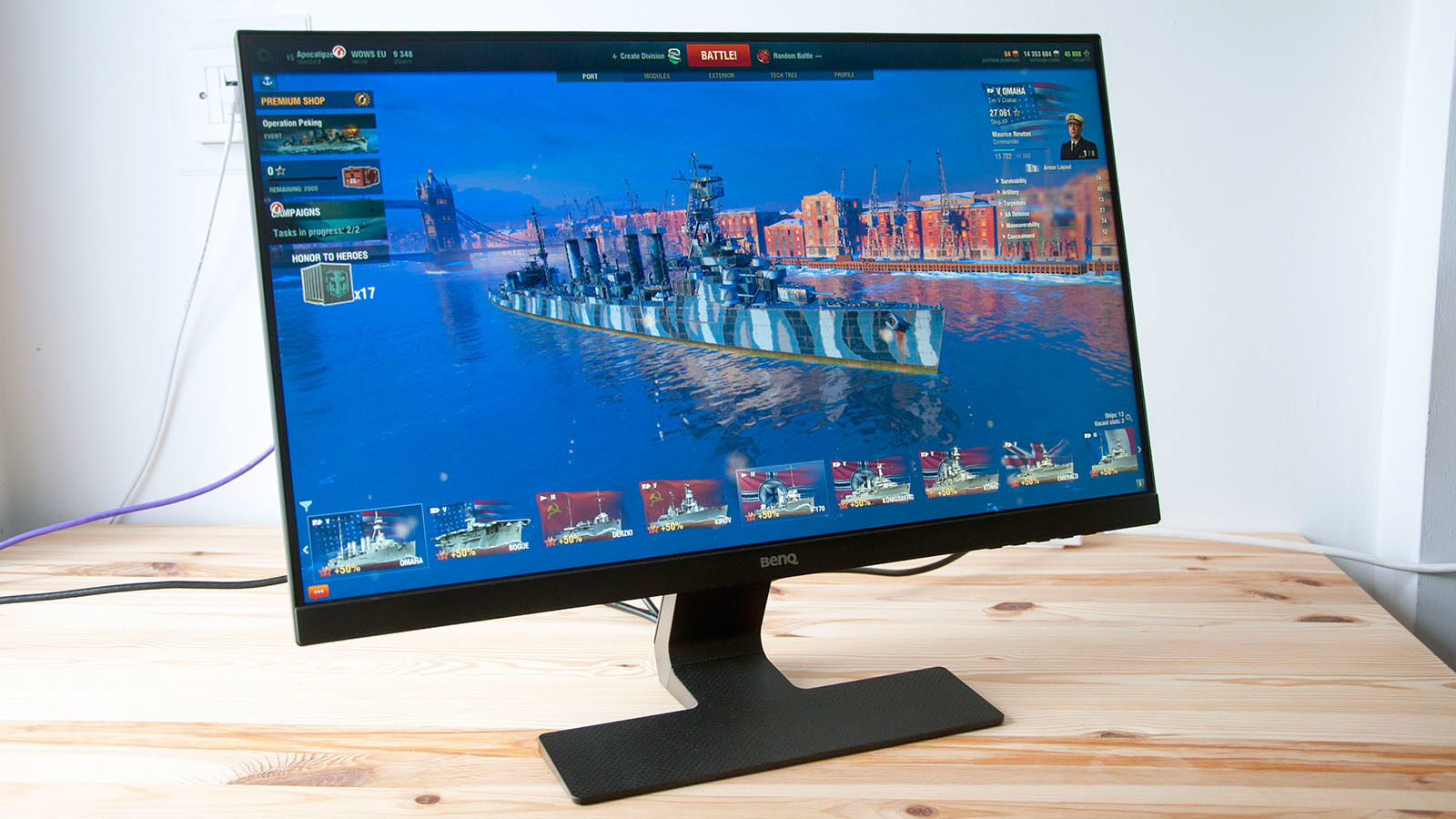What many more players have is a system that can achieve 1080p at the highest graphics quality in the ballpark of 60 to 100 fps. For those PCs, a 4K display or one that offers a 140Hz refresh isn’t appropriate, as the graphics card just can’t generate enough frames per second. The BenQ GL2580HM is made for general home and office users, it has some gaming potential for those with lower spec machines. Specifically, those who’d like to experience less screen lag but can’t justify the expense of replacement system and costly high-refresh-rate screen.
BenQ GL2580HM: Price
BenQ also makes the GL2580H, a variant without speakers, though you won’t save much buying this model. Competition for budget gaming screens comes from the likes of the Asus VN247H (£139.10) and ViewSonic VX2452mh (£145), with both of these offers the same resolution and a high refresh rate.
BenQ GL2580HM: Features & Design
Technophiles might well look at the GL2580HM’s specification and shrug, because as gaming focused displays go this one has quite modest ambitions. The 24.5in TN technology panel has a native resolution of 1080p, 8-bit colour and a brightness rating of 250 cd/m². It comes with an installable support foot with no swivel or twist capability, though it can tilt nicely. The construction is decent if mostly ABS plastic over a steel shell, and this panel being TN technology the viewing angles aren’t as good as those on an IPS screen. If this sounds much as you were expecting for £139.99, then be prepared for a slight reappraisal. Because under the made-for-a-price exterior the GL2580HM offers some unexpected features that elevate it above the typical entry-level 1080p LED. The first of this is that it comes with three of the standard PC outputs that almost every computer has at least one. DVI, HDMI and VGA inputs cover almost all computers, and BenQ even bundles a HDMI cable to make the monitor ready to use for most customers out of the box. We also like the minimal bevel styling, that it has an internal power supply, has a VESA 100 mount, cable management, consumes only 17 watts in ECO mode and has both a 3.5mm audio line in and headphone jacks. Glossing over the weedy speakers, the headline act of this hardware is a quoted 2ms response time while displaying 1080p resolution at 60Hz. On paper that’s great, but as we’ve experienced in the past having a quoted low response time doesn’t necessarily convert into lag-free play.
BenQ GL2580HM: Performance
Colour gamut expectations of the GL2580HM were low, but it isn’t as bad as it could have easily been. Delivering 97 percent of the sRGB range and 75 percent of AdobeRGB is more than respectable for TN panel technology. Tonal response wanders a little from the curve, being closer to 1.8 Gamma at lower brightness levels and nearer to 2.2 Gamma at the higher end. At a 100 percent brightness setting the generated output was 224.1 cd/m², reasonably close to the 250 cd/m² BenQ quotes. However, a contrast ratio of just 1:130 explains why the colours don’t have the impact of IPS technology and details can go missing in action inside the deeper shadows of high contrast imagery. Again, we’ve seen much worse, and the overall picture quality is decent for this price range using TN technology. As this display is designed specifically for gaming use it was important to check it for processing lag and to see if it was dropping frames to maintain the apparent smoothness of graphics in motion. Thankfully it doesn’t ditch frames, and the typical input lag for this display is around 10ms, impressively. Putting that in perspective, anything less than 16ms is highly desirable, and even 32ms is acceptable. At 60Hz a single frame lasts 16.6ms, so less than that value allows the monitor enough time to decode each frame before the next one comes along, avoiding frame drops. By creating a custom display resolution we discovered that this screen could also happily run at 75Hz in 1080p, even if it isn’t a mode that BenQ supports by default in their driver. Activate this option, place the monitor into AMA ‘Premium’ mode through the onscreen menus, and the GL2580HM becomes a true gaming option for those running a system with an Nvidia 960 GTX graphics card, or an AMD card with similar GPU performance capabilities.
Should I buy a GL2580HM?
The TN technology used in this design has its limitations, especially in respect of colour representation and viewing angles. If you can accept that the colours won’t pop like on an IPS panel, and you need to sit directly in front of it, the representation on offer here is perfectly acceptable for gaming. It might only have a 1080p resolution and need tweaking to achieve 75Hz. But most games are designed to work best at this exact resolution, even if the current trend is to go much higher. For more see, how to overclock your monitor. Mark is an expert on displays, reviewing monitors and TVs. He also covers storage including SSDs, NAS drives and portable hard drives. He started writing in 1986 and had contributed to MicroMart, PC Format, 3D World among others.

